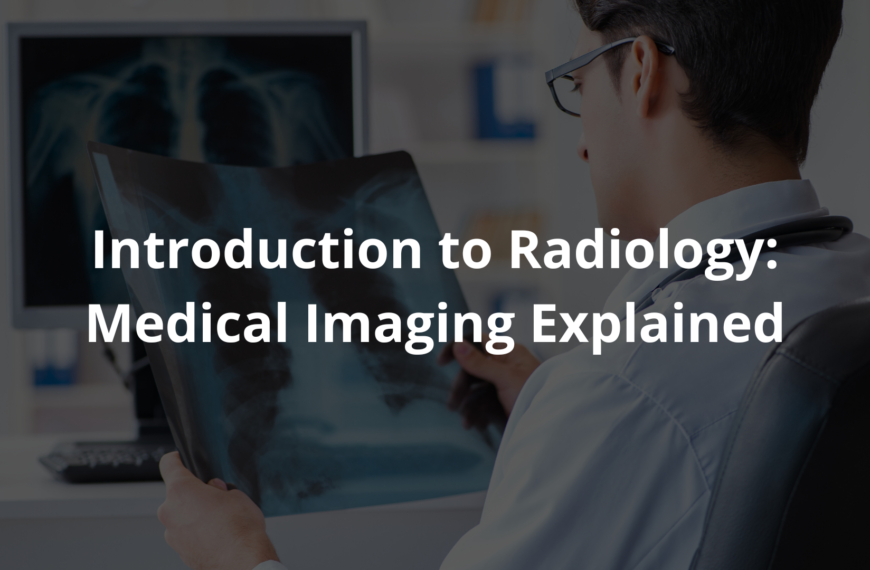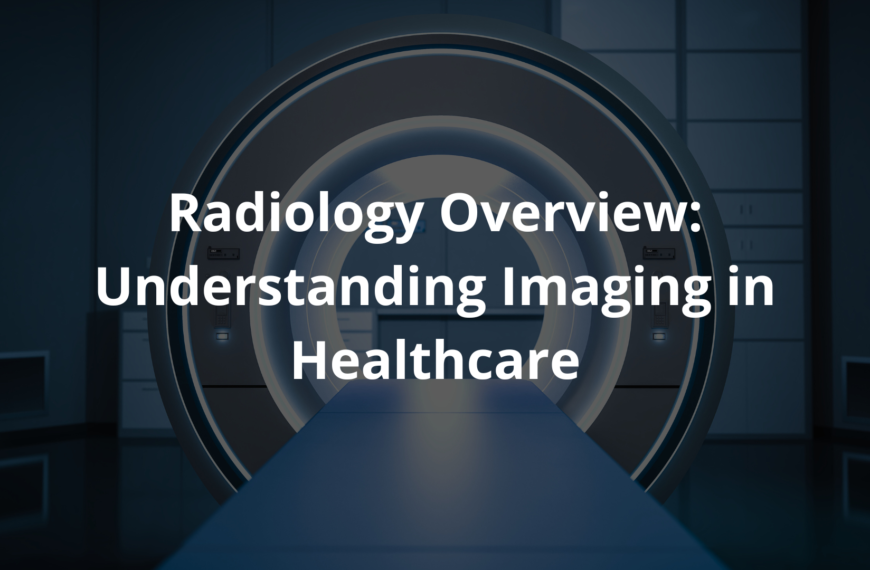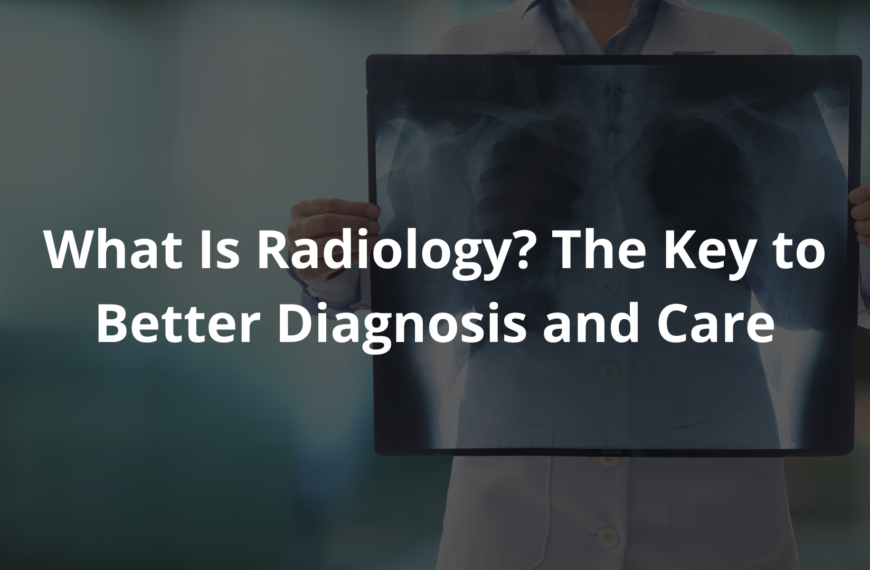Stay Safe from Radiation: Know the hazards and implement key measures to reduce your risk effectively.
Radiation is a common but often misunderstood part of modern life. While some exposure is unavoidable, the health risks depend on the type of radiation, the exposure level, and its duration. From medical imaging to natural sources like cosmic radiation, understanding the potential dangers of radiation and how to mitigate them is crucial for personal safety.
Key Takeaways
- Types of Radiation: Ionising radiation (e.g., X-rays, gamma rays) carries higher health risks like cancer and genetic mutations.
- Safety Measures: Proper radiation safety practices, including minimising exposure and using protective measures, can significantly reduce risks.
- Vulnerable Groups: Certain populations, like pregnant women and children, are more susceptible to radiation’s harmful effects and need extra precautions.
Types of Radiation
Radiation isn’t one-size-fits-all. There are various types of radiation, each with its own potential for harm. To make sense of this, let’s split them into two main categories: ionising and non-ionising radiation.
Ionising Radiation
This type of radiation is much more energetic and has the power to remove electrons from atoms, creating ions. It’s no surprise that this can be harmful to living tissue. The following are the main types of ionising radiation:
- Alpha Particles: These are emitted by radioactive materials like radon and uranium. They can’t pass through the skin, but they can cause serious internal damage if inhaled or ingested, particularly increasing the risk of lung cancer.
- Beta Particles: These are more penetrating than alpha particles. If beta radiation strikes the skin, it can cause burns. But their real danger comes when these particles are inhaled or ingested, leading to tissue damage.
- Gamma Rays and X-rays: These high-energy radiation types are capable of penetrating the body, making them a bit more troublesome. Over time, this can lead to cellular damage and increase the likelihood of developing cancers like lung, breast, and thyroid cancers. (1)
Non-Ionising Radiation
Non-ionising radiation is far less dangerous than its ionising counterpart, as it doesn’t have enough energy to strip electrons from atoms. However, it can still affect living tissues. Common sources include:
- Microwaves: Emitted from microwave ovens and some communication devices. When in high doses, they can cause heating of tissues, but everyday exposure is usually safe.
- Radiofrequency (RF) Radiation: This is what you get from mobile phones, Wi-Fi routers, and other communication devices. Most studies show low exposure is safe, though long-term health effects are still under ongoing investigation.
Health Effects of Radiation Exposure
Let’s face it: radiation doesn’t just sit there doing nothing. Depending on the type and duration of exposure, it can lead to various health issues.
Cancer Risk
Ionising radiation is especially notorious for its ability to cause cancer. That’s because it has enough energy to alter the DNA inside cells, leading to mutations. These mutations can result in cancer, particularly in tissues where cells divide rapidly, like the lungs and thyroid.
- Lung Cancer: One of the most common cancers linked to radiation exposure is lung cancer, especially among people exposed to radon, a radioactive gas found in many homes.
- Thyroid Cancer: The thyroid is especially vulnerable to radiation, particularly in children. Even small doses of radiation during childhood can increase the risk of thyroid cancer.
Genetic Mutations and Hereditary Effects
Radiation exposure isn’t just a risk to the person exposed. It can also have lasting effects on future generations. Ionising radiation can cause mutations in DNA, and these genetic changes might be passed on to offspring, increasing the risk of inherited genetic disorders.
Acute Radiation Syndrome (ARS) and Chronic Effects
If radiation exposure is high enough, it can lead to Acute Radiation Syndrome (ARS), which happens when a person is exposed to a large dose of radiation in a short amount of time.
Symptoms of ARS include nausea, vomiting, fatigue, and in severe cases, organ damage. Chronic effects, like radiation sickness or organ damage, can also occur if someone is exposed to smaller amounts of radiation over a longer period.
Internal vs. External Radiation Exposure
Not all radiation exposure is equal. It’s one thing to be exposed to radiation from the outside, but what happens if you ingest or inhale radioactive material?
Internal Exposure
Internal radiation exposure occurs when radioactive substances are inhaled, ingested, or absorbed through the skin. This is considered more dangerous because radioactive materials can accumulate in organs, potentially causing long-term damage.
Ingesting contaminated food or water can lead to high internal radiation doses and may increase the risk of cancers, especially in the gastrointestinal tract.
External Exposure
External radiation exposure, on the other hand, happens when you’re exposed to radiation from outside your body, such as from medical X-rays or a nearby nuclear facility. While still dangerous, external exposure is usually lower risk than internal exposure.
The radiation can’t accumulate in your body the way it can with internal exposure. However, precautions are still necessary to limit exposure time and use appropriate shielding.
Radiation Doses and Safety Limits
Now that we’ve established what types of radiation exist and how they can impact your health, it’s time to talk about doses. How do we measure them, and how much exposure is considered “safe”?
How Radiation Doses are Measured
Radiation doses are typically measured in Sieverts (Sv), which reflect the biological effects of radiation on living tissue. For everyday exposure, doses are often expressed in millisieverts (mSv), with one sievert equal to 1,000 millisieverts. Another unit of measure, Grays (Gy), is used to describe the amount of energy absorbed by tissue from radiation. (2)
Regulatory Limits and Safe Exposure Levels
Regulatory bodies like the Australian Radiation Protection and Nuclear Safety Agency (ARPANSA) set strict limits for radiation exposure in various settings. For the general public, the annual dose limit is usually about 1 mSv, though certain occupations—like medical or nuclear industry workers—are allowed higher exposure levels, usually around 20 mSv per year.
Special Populations at Risk
Some groups are more vulnerable to radiation exposure than others. If you’re in one of these groups, extra caution is essential.
Pregnant Women
Pregnant women are especially sensitive to radiation, as their developing fetus is at a higher risk for birth defects or developmental issues. Even low levels of radiation exposure during pregnancy can increase the likelihood of problems, so it’s crucial to limit exposure during this time.
Children and Teenagers
Children’s cells divide faster than adults, which increases their vulnerability to radiation. Their developing organs and tissues are particularly susceptible to the harmful effects of ionising radiation. Extra care should be taken when they undergo medical imaging procedures like X-rays.
Healthcare Providers
Doctors, nurses, and other healthcare professionals are often exposed to radiation, especially in medical settings. They must follow strict protocols to limit exposure, such as wearing protective shielding and minimising the time spent near radiation sources.
Radiation Exposure Sources
Now, let’s look at where we’re getting all this radiation. Is it all from nuclear power plants and medical treatments, or are there more unexpected sources?
Natural Sources
We are constantly exposed to natural radiation from sources like cosmic radiation (from the sun and space) and radon gas (a naturally occurring radioactive gas found in some buildings). This is part of our everyday environment, and while we can’t completely avoid it, these natural sources generally pose a low-level risk.
Man-made Sources
Man-made sources of radiation include medical radiation (like X-rays and CT scans), nuclear power plants, and even consumer electronics like mobile phones and microwaves. These sources contribute to our total radiation exposure, but safety regulations ensure the risks remain minimal.
Everyday Exposure
If you’re reading this on a device, you’re being exposed to a small amount of radiofrequency radiation from your phone, tablet, or Wi-Fi router. But don’t worry—the amounts are generally considered safe. The real concern is chronic exposure, which is still being studied for long-term health effects.
Radiation Safety Measures and Regulations
Credits: UCSF Imaging
As with any health risk, safety measures and regulations are in place to keep radiation exposure within safe limits.
Justification
That’s correct! Radiation use, especially in medical settings, is always carefully considered. The principle of “justification” ensures that the potential benefits (like diagnosing a health issue or guiding treatment) outweigh any risks, such as exposure to radiation.
Medical professionals evaluate the situation to make sure the procedure, like a CT scan, is truly needed and will provide crucial information. It’s a balance between gaining valuable insights for patient care and minimising any harm that might come from radiation exposure.
ALARA (As Low As Reasonably Achievable)
The ALARA principle is key in radiation safety. It means exposure should be kept as low as reasonably achievable. This is done by using shielding, reducing exposure time, and keeping a safe distance from radiation sources.
Dose Limitation
Exposure limits are enforced in both medical and occupational settings to keep workers and the public safe. The ARPANSA sets dose limits to prevent harmful effects from radiation exposure, helping to protect everyone from unnecessary risks.
Emerging Research and Public Health Implications
Ongoing research is constantly refining our understanding of the effects of radiation, particularly when it comes to low-level chronic exposure. For example, the health implications of prolonged mobile phone use are still being studied, as concerns about long-term exposure to radiofrequency radiation persist.
Additionally, space missions and work in nuclear power plants pose unique challenges when it comes to radiation exposure. New safety measures and advancements in technology aim to reduce risks for astronauts and workers in these environments.
Conclusion
Radiation is all around us, and while the risks are real, they can be managed. By understanding the types of radiation, the effects of exposure, and the safety measures in place, we can make informed choices about how to protect ourselves.
Whether it’s limiting unnecessary medical imaging or reducing exposure to man-made radiation sources, it’s important to stay informed and take steps to keep yourself safe from unnecessary risks.
FAQ
What is the risk of cancer from radiation exposure?
The risk of cancer from radiation exposure depends on the type of radiation and the amount of radiation a person is exposed to. Studies have shown that high-energy radiation, like that from nuclear power plants or medical radiation, can cause cancer if people are exposed to doses of radiation over time. However, the risk is generally low for most everyday exposures, such as cosmic radiation or natural radiation, which are part of our daily environment.
What types of radiation exist?
Radiation comes in different forms. The main types of radiation are ionising radiation and non-ionising radiation. Ionising radiation, like X-rays or radiation from nuclear power plants, can have harmful effects on the human body. Non-ionising radiation, such as visible light, infrared radiation, and electromagnetic radiation, is typically not harmful at the levels we encounter in everyday life.
What are radiation exposures, and how do they affect the human body?
Radiation exposures refer to the amount of radiation a person comes into contact with. These exposures can come from natural sources, like cosmic radiation from outer space, or from man-made sources, such as medical radiation (like a chest X-ray). When radiation enters the body, it can affect human tissues, particularly the thyroid gland or salivary gland, depending on the type of radiation and the dose. The biological effects can range from minimal to severe, such as cancer or radiation sickness.
What are the health risks of radiation exposure?
Radiation exposure can lead to different health risks depending on the level and type of radiation. For example, exposure to high-energy radiation or large doses can cause serious health effects, including acute radiation syndrome and cancer of plasma cells. However, low-level exposures, like those from natural background radiation, are less likely to cause harm. Still, it’s important to minimise unnecessary exposure to reduce potential health effects.
How can radiation exposure affect pregnant women and children?
Pregnant women and children are more sensitive to radiation exposure. The effects of radiation on a developing foetus can be more severe, including potential hereditary effects or damage to cells. Health care providers advise minimising exposure to radiation, especially for pregnant women. For children, the age at exposure plays a role in the level of radiation they can tolerate without risk, and radiation doses should be carefully controlled.
What are the symptoms of radiation sickness?
Radiation sickness occurs when a person is exposed to large amounts of radiation in a short period. Symptoms of radiation sickness can include nausea, vomiting, weakness, and in severe cases, cell death or other adverse health effects. Radiation emergencies can lead to acute radiation syndrome, which requires immediate medical attention.
What is the difference between natural radiation and man-made radiation?
Natural radiation comes from sources like the sun, outer space, and the ground. It is called “background radiation” and is always present around us. Man-made radiation, on the other hand, comes from human activities, such as medical treatments (like X-rays) and nuclear power plants. Both types of radiation can expose the body to varying doses, but natural radiation is usually at a much lower level than man-made sources.
Can radiation exposure cause cancer?
Yes, radiation exposure, especially from high doses or high-energy radiation, can increase the risk of cancer. The effects of radiation on the body, particularly the risk of cancer, depend on the amount and type of radiation. For example, cancer from radiation exposure can occur in various organs, including the thyroid gland, and long-term exposures can increase the risk of developing cancer.
How does radiation affect biological cells?
Radiation can damage biological cells by altering their structure. When radiation interacts with the cell structure, it can cause changes that lead to cell death or cancer-causing effects. The biological effects of radiation depend on the dose, type, and exposure level. At high doses, radiation can lead to severe damage, including cancer-causing effects or even radiation sickness.
What are stochastic effects of radiation?
Stochastic effects of radiation are the long-term health effects that occur from radiation exposure. These effects do not have a threshold, meaning they can happen even with low levels of exposure. For example, cancer-causing effects and the risk of hereditary effects fall under stochastic effects, as they become more likely with higher doses of radiation over time.
Is medical radiation safe?
Medical radiation, such as that from chest X-rays or other diagnostic procedures, is generally safe when used appropriately. Health care providers are careful to limit radiation doses to the necessary amount to achieve accurate results. However, repeated exposure to radiation over time can increase the risk of adverse effects, so it’s important to use medical radiation only when needed.
References
- https://www.arpansa.gov.au/understanding-radiation
- https://www.apsc.gov.au/initiatives-and-programs/workforce-information/research-analysis-and-publications/state-service/state-service-report-2023/serving-community/measuring-and-communicating-australias-radiation-risk




